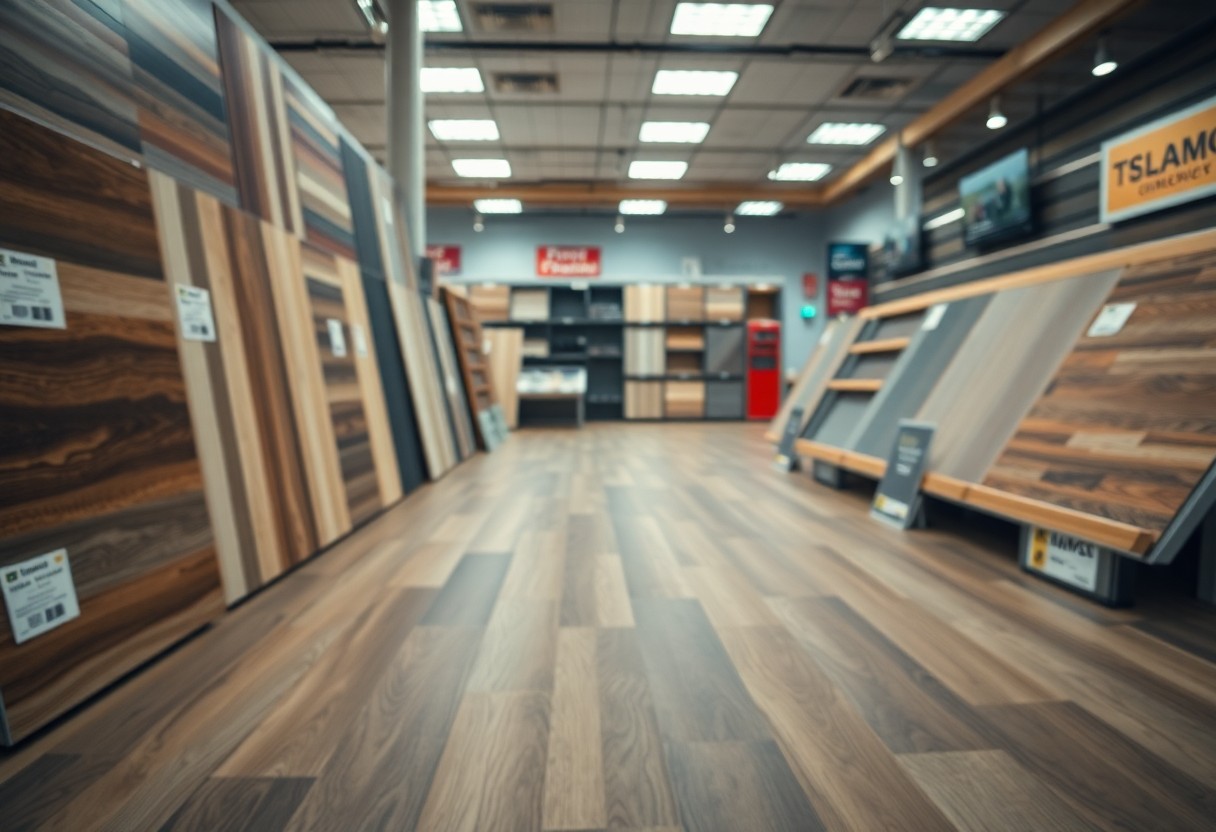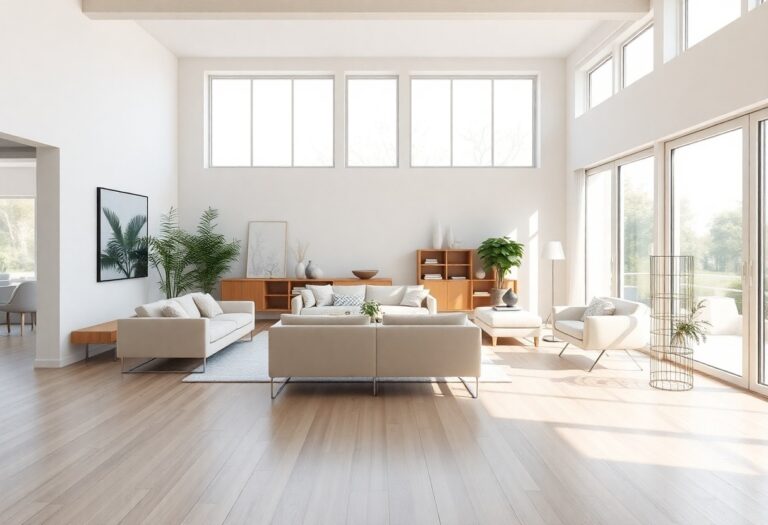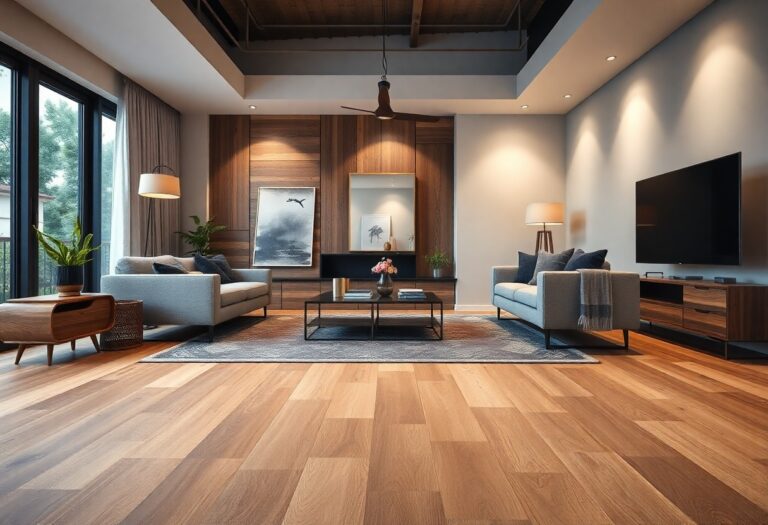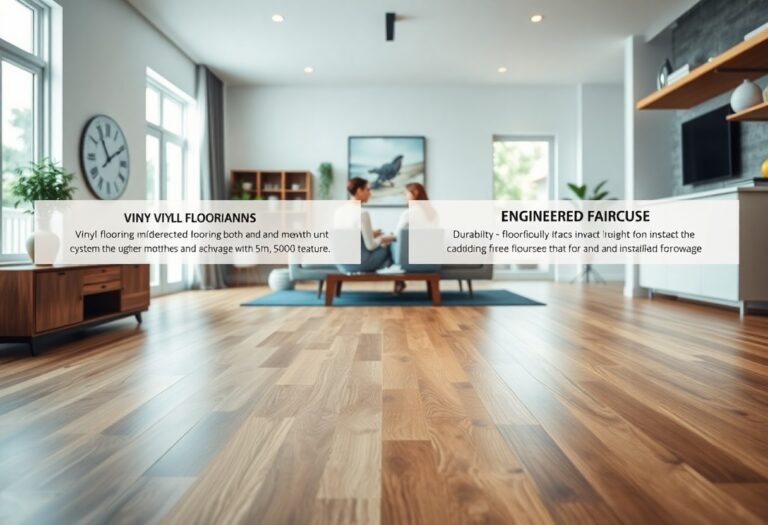Budget-friendly and versatile, vinyl flooring has emerged as a top choice for homeowners seeking style and durability without breaking the bank. You can explore various designs that mimic hardwood, tile, and stone, while enjoying the resilience needed for high-traffic areas. This guide will help you navigate the options available, ensuring you make informed decisions that align with your aesthetic preferences and financial considerations.
Unpacking Vinyl Flooring: The Different Styles That Define Your Space
Vinyl flooring offers a plethora of styles that can transform any room, from sleek and modern to warm and rustic. With options like wood-look planks, stone-inspired tiles, and vibrant patterns, you can match your flooring to your unique aesthetic. Many designs feature high-definition visuals, providing an authentic appearance that mimics natural materials. This adaptability makes vinyl a stellar choice for various spaces, allowing you to express your personal style without compromising on durability or functionality.
Luxury Vinyl Plank vs. Vinyl Composite Tile
Luxury vinyl plank (LVP) replicates the appearance of hardwood flooring, featuring rich textures and impressive design clarity, while vinyl composite tile (VCT) showcases a more traditional tile look. LVP typically has a thicker wear layer, providing enhanced durability for high-traffic areas, whereas VCT is generally more cost-effective but may require additional maintenance. Your choice should depend on the specific needs of your space and your desired aesthetic.
Choosing Between Different Finishes and Textures
Finishes and textures in vinyl flooring can significantly influence your space’s overall appearance. Glossy finishes can add elegance and light reflection, perfect for modern settings, while matte finishes provide a more understated, cozy aesthetic. Textures such as embossed or hand-scraped enhance realism, giving the surface depth and character. Carefully selecting these elements not only complements your interior design but also determines the practicality of the flooring in terms of cleanliness and maintenance.
Textured finishes can offer additional traction, making your flooring safer in spaces prone to moisture like kitchens or bathrooms. For example, an embossed finish mimics the natural imperfections of wood or stone, creating a tactile experience that can elevate your design. Glossy options may highlight colors and patterns but may require more upkeep to maintain their shine. Evaluating your lifestyle, traffic patterns, and cleaning preferences will guide you in making a choice that combines both style and functionality seamlessly.
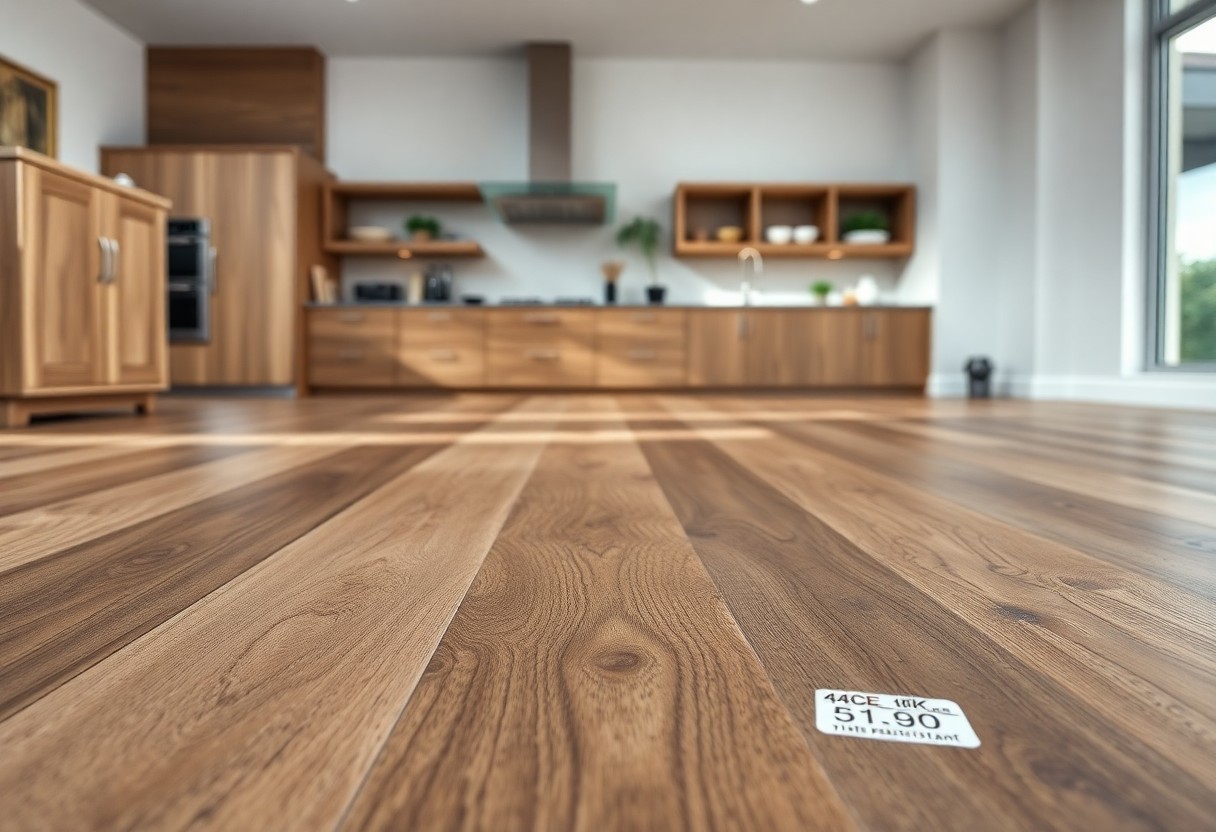
The Science of Durability: What Makes Vinyl Flooring a Smart Choice
With advancements in manufacturing, vinyl flooring now offers exceptional durability, making it a reliable option for any space. Its multi-layer composition allows for resistance against scratches, dents, and everyday wear and tear. This durability not only ensures longevity but also retains the floor’s aesthetic appeal over time, making vinyl a smart investment for your home.
Wear Layers and Their Impact on Lifespan
The wear layer on vinyl flooring is a transparent top coating that protects against scratches and stains, directly impacting its lifespan. Thicker wear layers, typically ranging from 12 mils to 30 mils, can extend the floor’s durability, making it suitable for high-traffic areas. Choosing a floor with a robust wear layer can significantly enhance your flooring experience.
Resistance to Moisture and Temperature Changes
Vinyl flooring excels in moisture resistance, making it ideal for kitchens, bathrooms, and basements. Its synthetic composition prevents water damage that can warp or stain other flooring materials. Additionally, vinyl can handle temperature fluctuations without expanding or contracting excessively, ensuring a stable, long-lasting floor in various environments.
| Moisture Resistance | Provides protection against water damage, making it suitable for wet areas. |
| Temperature Stability | Withstands temperature changes without warping or buckling. |
Understanding how vinyl flooring reacts to moisture and temperature can help in selecting the right product for your needs. Floors with higher quality materials often incorporate waterproof backing and insulation layers, which ensure minimal absorption and reduce the risk of mold growth. This important characteristic ensures your flooring remains intact even in fluctuating environmental conditions, enhancing both durability and your peace of mind.
| Installation Recommendations | Consider professional installation to prevent future water damage due to improper sealing. |
| Surface Maintenance | Regular cleaning helps maintain resistance properties, ensuring longevity. |
The Budget Dilemma: Exploring Cost-Effective Vinyl Options
Many homeowners face budget constraints when considering flooring options, but quality does not have to be sacrificed. Affordable vinyl flooring provides you with a variety of styles and finishes that cater to different aesthetics without overspending. With prices starting as low as $1 per square foot, you can find options that not only suit your budget but also offer long-lasting durability.
Average Costs and Comparisons to Other Flooring Types
Vinyl flooring typically falls between $2 to $5 per square foot, making it competitive compared to other materials. For example, hardwood can range from $8 to $20, while laminate costs about $1 to $3. Not only is vinyl budget-friendly, but it also boasts greater resistance to moisture, making it a wise choice for various spaces.
- Vinyl: $2 to $5 per square foot
- Hardwood: $8 to $20 per square foot
- Laminate: $1 to $3 per square foot
- Tile: $5 to $15 per square foot
- The overall value of vinyl makes it an attractive option.
Ways to Maximize Value Without Sacrificing Quality
To ensure you’re getting the best value for your budget, focus on selecting products that offer durability, ease of maintenance, and warranties. Research various brands and opt for thicker wear layers that enhance longevity. Additionally, consider professional installation options, as they can often ensure a flawless finish that can prevent future repairs.
Investing in quality vinyl flooring requires keen attention to product specifications. Look for options with warranties of at least 10 to 20 years, indicating a brand’s confidence in their product. Thicker vinyl planks resist wear and tear better, so prioritize at least a 20 mil wear layer for enhanced durability. Shopping during sales events or clearance can yield significant savings, while exploring manufacturer discounts can elevate your choices without inflating your budget. Utilizing quality underlayment can also improve both comfort and value, ensuring your flooring lasts longer.
Installation Insights: Do-It-Yourself or Hire a Pro?
Understanding whether to tackle vinyl flooring installation yourself or hire a professional can significantly influence your project’s success. DIY installation can save money, but it requires time and effort. Alternatively, hiring a professional ensures expert execution, potentially saving you from costly mistakes. Consider your timeline, project complexity, and personal skill level when making this choice.
Assessing Your Skill Level for DIY Installation
Your comfort and experience with home improvement projects will dictate whether DIY is a viable option. If you possess basic tools and familiarity with flooring techniques, you might manage the installation. However, intricate patterns or large spaces may overwhelm you, leading to subpar results. Evaluating your past projects can provide insight into your readiness.
Considering Labor Costs and Professional Help
Hiring a professional for installation typically incurs additional costs, with labor ranging from $1 to $3 per square foot. While this adds to your budget, the expertise they bring can ensure a flawless finish. A pro can also navigate any unforeseen challenges, such as subfloor repairs, which might not be part of a DIY approach.
Labor costs vary depending on your location and the complexity of the job. In metropolitan areas, professional rates may be higher, sometimes reaching $4 per square foot. Weighing these costs against your potential savings from a failed DIY attempt is vital. A well-executed installation can enhance your home’s value and comfort, making the investment worthwhile.
Maintenance 101: Preserving Your Investment Over Time
Investing in vinyl flooring requires attention to maintenance to ensure its longevity and appearance. Regular upkeep, including cleaning and proper care, not only safeguards your flooring but also enhances its aesthetic appeal. By following simple maintenance routines, you can keep your vinyl flooring looking new for years, ultimately providing a greater return on your investment.
Cleaning Techniques to Prolong Lifespan
Use a soft-bristle broom or vacuum designed for hard floors to remove dust and dirt regularly. For deeper cleans, a damp mop with a pH-neutral cleaner works well—avoid harsh chemicals that can damage the surface. Spills should be wiped up immediately to prevent stains, and occasionally applying a vinyl floor polish can add an extra layer of protection.
Common Missteps to Avoid for Long-Lasting Floors
A few missteps can significantly shorten the lifespan of your vinyl flooring. Avoid using abrasive cleaners and scouring pads, as these can scratch and dull the surface. Skipping routine cleaning can lead to dirt buildup that dulls the floor’s sheen. Also, refrain from dragging heavy furniture across the floor, which can cause tears and indentations. Use felt pads under furniture legs to prevent damage and maintain the flooring’s integrity.
Final Words
From above, you can see that vinyl flooring offers a diverse range of styles, impressive durability, and budget-friendly options to suit your needs. Whether you prioritize aesthetics, longevity, or cost-effectiveness, vinyl can cater to all your flooring requirements. Understanding these elements will empower you to make an informed decision that enhances your space while staying within your budget. With the right vinyl flooring, you can achieve both functionality and visual appeal in your home.


